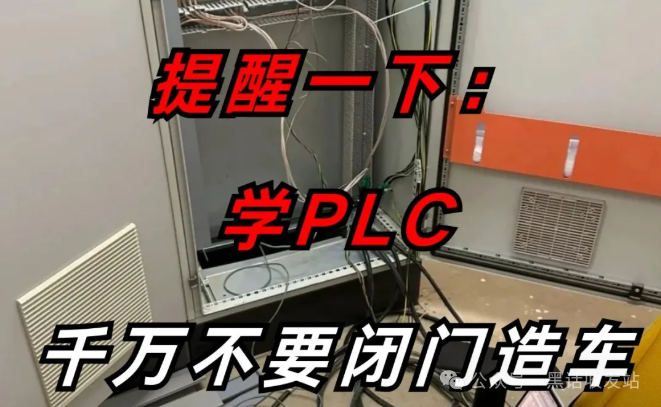
PLC Application Case: Rubber Extrusion Production Line Achieves 300% Improvement in Product Accuracy!
Introduction
**Hello everyone!** Today I want to share a case that has excited engineers in the rubber products industry — the practical experience of improving the accuracy of a PLC-controlled rubber extrusion production line by 300%! Don’t doubt it, this is not a theoretical calculation, but areal achievement from our team at a large rubber products factory. Want to know how we did it? Keep reading!
Project Background
Let’s first take a look at the state of the rubber extrusion production line before the transformation:
-
Large product size fluctuations: ±1.5mm tolerance led to frequent complaints from customers
-
High scrap rate: Reaching 15%, resulting in serious raw material waste
-
Long mold change time: 45 minutes needed for adjustments each time product switching occurred
-
Frequent manual interventions: Operators needed to constantly adjust parameters manually
**”This is simply burning money!”** Factory Director Wang described the production situation at that time. So, how did the PLC change all of this?
PLC Transformation Plan
We adopted a control system centered around theSiemens S7-1500 series PLC, combined withhigh-precision servo drives and intelligent temperature control modules, achieving the following key improvements:
1. Closed-loop Control System
Traditional Method: Open-loop control, operators adjust based on experience
PLC Solution:<span>Real-time feedback + automatic compensation</span> closed-loop control
**”It’s like installing an autopilot system on the production line!”** Operator Xiao Li commented on the transformed system. The PLC monitors extrusion pressure, temperature, and speed in real-time, automatically adjusting parameters to ensure product consistency.
2. Intelligent Temperature Zone Control
Rubber extrusion is extremely sensitive to temperature, and traditional control methods exhibit a **”temperature roller coaster”** phenomenon:
-
Heating Zone: Temperature fluctuation of ±10℃
-
Cooling Zone: Uneven cooling
We adopted the PLC’sPID temperature control algorithm, dividing the entire production line into 8 temperature control zones, each independently controlled:
-
Temperature fluctuation: Reduced from ±10℃ to ±0.5℃
-
Energy consumption reduction: 15%
3. Adaptive Extrusion Speed Control
Key Breakthrough: The PLC automatically adjusts the extrusion speed based on real-time monitoring of rubber viscosity
“It’s like giving the production line an intelligent brain!” Technical Director Zhang exclaimed. Through the PLC’sadaptive algorithm, the system can:
-
Automatically compensate for raw material batch differences
-
Real-time adjust screw rotation speed
-
Ensure constant extrusion volume
Amazing Results
After 3 months of operational testing, the transformed production line deliveredstunning results:
| Metric | Before Transformation | After Transformation | Improvement Rate |
|——|——–|——–|———-|
| Product Accuracy | ±1.5mm | ±0.5mm | 300% |
| Scrap Rate | 15% | 3% | 80% reduction |
| Mold Change Time | 45 minutes | 8 minutes | 82% reduction |
| Production Capacity | 800 meters/hour | 1200 meters/hour | 50% increase |
**”It’s like replacing the entire production line!”** Director Wang looked at the report and couldn’t stop smiling.
Technical Details Revealed
Want to know how we achieved these improvements? Here are a fewkey technical points:
1. High-Precision Position Control
Using1μm resolution encoders for feedback, the PLC controls the servo motor to achieve:
-
Screw position accuracy: ±0.01mm
-
Speed control accuracy: ±0.1%
**”We could never have imagined such accuracy before!”** Equipment Supervisor Lao Chen said.
2. Intelligent Recipe Management System
We developed adynamic recipe system based on PLC:
-
Stores 200 product recipes
-
One-click switching, automatically adjusting all parameters
-
Historical data traceability function
Operator Xiao Wang stated:<span>"Switching products is as easy as changing TV channels now!"</span>
3. Predictive Maintenance Function
The PLC system also integratesequipment health monitoring:
-
Vibration analysis
-
Temperature trend monitoring
-
Wear prediction
Maintenance Team Leader feedback:<span>"Now we can detect problems in advance, no more 'firefighting'!"</span>
Challenges Encountered
Of course, the project was not smooth sailing, and we encountered severalthorny issues:
-
Variability in Rubber Material Properties: Significant viscosity differences between different batches of raw materials
- Solution: Develop adaptive compensation algorithms
Environmental Temperature Effects: High summer temperatures led to decreased cooling efficiency
- Solution: PLC dynamically adjusts cooling water flow
Operator Resistance to Change: Older employees distrust automatic control
- Solution: Conduct training + set manual/automatic switching functions
**”The biggest challenge is actually changing people’s mindsets.”** Project Leader Liu summarized.
Replicable Experience
If you want to replicate such success in your own factory, here are a fewpractical suggestions:
-
Start with Key Pain Points: First address the most impactful issues
-
Implement in Phases: Don’t try to transform the entire system at once
-
Emphasize Data Collection: Historical data from the PLC is crucial for optimization
-
Train Your Team: Ensure operators and maintenance personnel master the new system
Technical Consultant Lao Li emphasized:<span>"PLC is just a tool; the real improvement comes from a deep understanding of the process."</span>
Interactive Questions
-
What similar challenges does your production line face?
-
What production issues have you considered solving with PLC?
-
If you were to implement a similar transformation, what aspects would you be most concerned about?
Conclusion
The successful transformation of this rubber extrusion production line proves thatPLC is not just a simple controller; when combined with advanced algorithms and a proper understanding of processes, it can bring aboutamazing improvements. A 300% increase in accuracy not only means better product quality but also leads tolower costs, higher efficiency, and stronger market competitiveness.
**”This is not the end, but a new starting point for intelligent manufacturing!”** Director Wang said at the project summary meeting. I hope this case inspires you, and if you have any questions or want to share your experiences, feel free to leave a comment for discussion!
ShareCollectViewLike